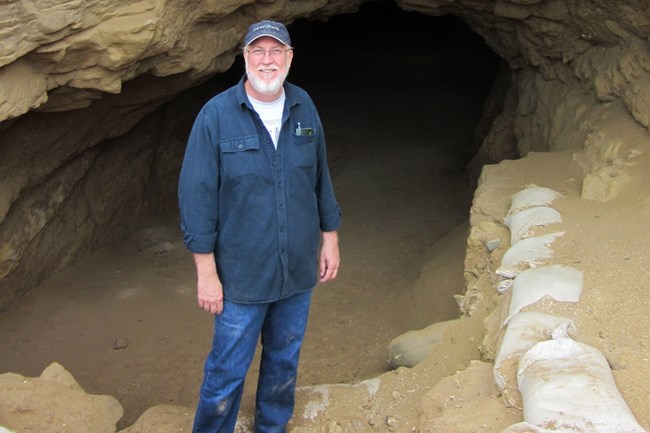
Chapter 12
Steve Schwartz, US Navy archeologist (retired), San Nicolas Island, discusses the location of the whalebone hut found in the 1930s.
In 1939, archeologist and historian Arthur Woodward of the Los Angeles County Museum of Natural History visited San Nicolas Island. He brought with him a copy of Captain Nidever’s and Carl Dittman’s accounts of the discovery of the Lone Woman in 1853. Using the accounts, Woodward was able to find the approximate location where the Lone Woman was found in a small hut, or windbreak. He found a scattering of whalebones like the ones described as being part of the Lone Woman’s windbreak. From this discovery, Woodward believed he had found the remains of the Lone Woman’s actual hut.
In 1940, he returned and photographed the site as he found it. He then reconstructed part of the hut by standing the whalebones up on edge. He photographed his assistant sitting in the reconstructed hut. This looked a lot like the scene Carl Dittman may have observed when he first spied the Lone Woman.
Using Woodward’s field notes and photographs, I was able to relocate this precise spot. There are still remains of whalebones at the site today. The location is on top of a sand dune at the northwest end of San Nicolas Island. There is evidence of previous occupation in the form of a midden deposit (trash or refuse heap).
Based on my research, I agree with Woodward that this is likely the location where the Lone Woman was first seen. However, since Dittman observed three huts on the dune as he approached the Lone Woman, I cannot be certain that this is the precise spot where she was found. Future archeological excavations could reveal evidence that would securely pinpoint the exact location.
-
Listen to chapter 12 entry
Learn about a whalebone hut found on San Nicolas Island.
Last updated: November 26, 2017
